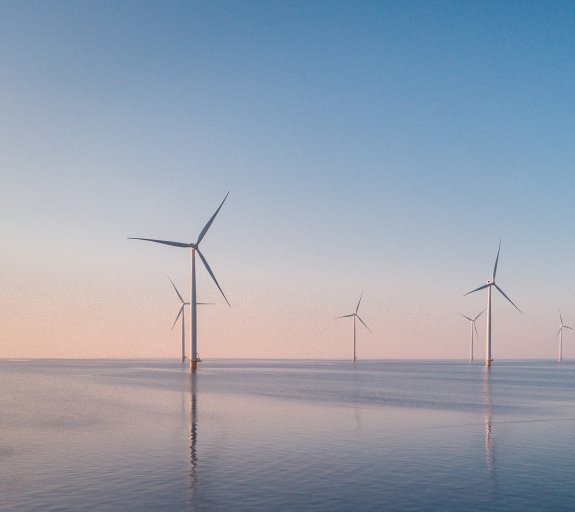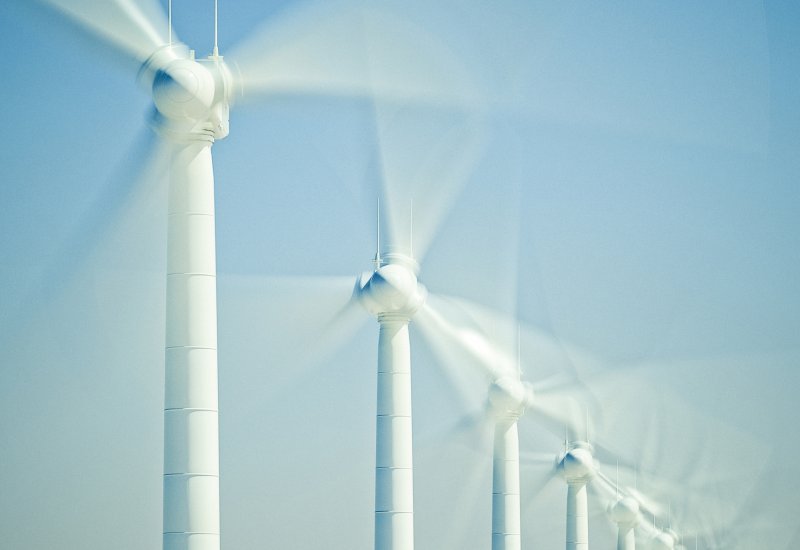
Why less carbon means stronger growth for the global economy
As long-term investors, we always need to have an eye on sustainability – sustainability of business models, of earnings growth and the ability to manage risk.
Sustainability, however, has taken on a new meaning in recent years. It is widely agreed that climate change poses a huge threat to the world - to our societies and economies. Quite simply, without the transition to a low carbon economy, we won’t have sustainable economic growth, and that means we can’t have sustainable investment returns.
The global economy has endured a huge hit as a result of the COVID-19 pandemic. We have seen unemployment rates go up and businesses go under. A recent report from the Organisation for Economic Co-operation and Development highlighted that government borrowing in the world’s richest economies surged by a record 60% in 2020, double that of the 2008 financial crisis.1 More than ever, the world needs greater GDP expansion and less toxic emissions.
Fundamentally, lower carbon will mean more growth. But achieving the Paris Agreement of limiting global warming to well below 2°C, preferably to 1.5°C, compared to pre-industrial levels will require substantial investment. But if we do nothing, scientists believe that global temperatures will rise by more than 3 degrees above pre-industrial levels.
We know that is going to be very damaging to the environment. It will result in rising sea-levels, extreme weather, societal disruption, the loss of economic activity and more.
The energy transition is about moving away from our reliance on the fuels which have driven the global economy for the past 200 years. Instead we need to rely on renewable energy and achieve greater energy efficiency, and this will impact not just power generation but transport, industrial processing, agriculture and the buildings we live and work in.
Government backing
Governments are thankfully pledging to invest billions into the energy transition – and they are setting themselves some very ambitious targets. In 2020, the European Union unveiled a recovery deal, which included some €550bn earmarked for green initiatives - the biggest single climate pledge ever made, while China, the world’s biggest emitter of carbon dioxide, has committed to becoming carbon neutral by 2060.
France has set itself the goal of becoming the first major low-carbon economy in Europe, after announcing a €100bn post-COVID-19 rescue package, of which a third is dedicated to climate-related projects.2
In addition, New Zealand introduced a law to become mostly carbon neutral by 20503 while Australia, home to some of the world’s largest coal mines, is aiming to have 94% of its electricity generated via renewables by 2040.4
New US President Joe Biden has yet to set out his stall in full, but climate is high on his administration’s agenda - and he has already said he wants to convert around 645,000 federal vehicles to electric power. In November this year, we have the delayed United Nations climate change conference COP26 in Scotland. In the months running up to it, I anticipate we will hear more governments reiterating their energy plans and carbon reduction targets.
Growth opportunities
Policy and technology are driving the economics of the energy transition. In our view, the energy transition will be as transformative for the world economy as the digital revolution has been since the 1980s. Over recent years there has been a huge amount of investment into renewable energy. Renewable energy power generation soared by 57% between 2010 and 20185 and the share of renewables in global electricity generation jumped to nearly 28% in the first quarter (Q1) of 2020, from 26% a year earlier.
The increase in renewables came mainly at the cost of coal and gas, though those two sources still represent close to 60% of global electricity supply. In Q1 2020 variable renewables – in the form of solar and wind power – reached 9% of generation, up from 8% a year earlier.6
But the future possibilities are huge. There are going to be significant growth opportunities as a result of this shift away from fossil fuels towards renewable energy. Research shows that clean technology has the potential to drive $1tn to $2tn a year of green infrastructure investments while creating some 15 to 20 million jobs globally and that renewable energy could be the largest area of spending in the energy industry in 2021, surpassing oil and gas.7
For investors, I believe, there is a need to start adjusting portfolios now. We all need to reset what we think will be the drivers of economic growth over the next decade and beyond.
Cutting carbon
The reliance on oil and other fossil fuels has led to enormous political problems - even war - over the years. Moving to renewable energy brings immediate benefits. It lowers external costs – costs that are created by economic activity that can affect everybody, such as healthcare costs from heat waves and droughts, and loss of property from flooding.
It has been widely recognised that we need to internalise those costs, and this means putting a price on pollution. The costs of renewable energy sources have been coming down dramatically; the levelized cost of electricity from renewable energy – the cost of electricity over the entire life of a power project – is now lower for renewable energies than it is for coal-fired electricity generation. It doesn’t make sense to persist with coal as it’s now more expensive than renewable energy.
At the same time the price of carbon is rising. There are various frameworks, or emission trading systems, which aim to put a price on carbon. Companies in certain industries need to pay for the right to generate carbon emissions and the price is going up. There are more of these trading systems being established and they will cover an ever-greater number of global energy and industrial sectors. They are going to help internalise the costs of carbon emissions – if you generate CO₂ you are going to have to pay for it – and you’ll have to pay a higher price in the future. This dramatically changes the economics of some business models and should lead to greater efficiency because of lower, more stable energy costs.
The transition
It is not easy to replace fossil fuels. Goldman Sachs created a so-called ‘carbon curve’8 that estimates the whole range of economic activity that uses fossil fuels – right through the value chain. It then analysed what the cost would be of moving from ‘business as usual’ to replacing primary energy sources with renewable energy. That cost curve eventually gets very steep. For some activities - power generation, agriculture and other land use – this is less problematic and more straightforward. We are witnessing big growth in electric vehicle usage - in fact global sales of electric cars globally actually accelerated by 43% in 2020, to over three million, despite an overall slump in car sales brought on by the pandemic.9 But while electric vehicles numbers remain small, their uptake is expected to grow.
For other sectors - industrial processing, transportation including air and shipping - it becomes very expensive moving to renewable energy. But an abundance of new technology is coming that affects all industries and economic activity. For example, hydrogen technology has barely scratched the surface of its potential as a fuel source for industry and transport, while carbon abatement technology is improving, which is providing lots of growth and investment opportunities. The fact that renewable energy still only accounts for 28% of global electricity generation means we still have some way to go.
The cost curve of the transition is ultimately flattening because of the investment we are seeing in new technology, government policy support and the fact that more asset owners are directing capital to carbon reducing technologies. Saudi Arabia is building a brand-new zero emissions city in the desert. It’s going to rely completely on renewable energy and new technologies – it is a real-life experiment to show how we can change the way we live in a more sustainable way.10
The long-term benefits of the transition
As investors, we need to think about the structural trends that will generate economic growth in the future. We believe that means decarbonising portfolios and investing in climate solutions. It means thinking about how to generate earnings growth in the future as business models change and we all benefit from more economic growth and less carbon. Traditional oil and gas producers are adapting their business models - they know that if they do not, they won’t have a future and will be left with stranded assets. We are not going to move to zero oil and gas; companies will still do what they are doing today but they are moving very quickly into the renewable space.
We are at the start of a transitioning period towards a lower carbon economy, which doesn’t mean less economic growth - it means more. The costs and risks of doing nothing are much too high. We are on a journey that is going to involve billions, if not trillions, of dollars of investment over the next few years and the technological opportunities that this is going to generate are very exciting. The energy transition will not just create jobs for displaced oil and gas workers, but new positions in new locations, as the placement of these new energy sources become more spread out around the globe.
We need economic growth to return but we also need fewer carbon emissions; we all know the dangers presented by climate change. I believe the energy transition can deliver both short-and-long-term benefits; there are huge investment possibilities and massive opportunities in terms of how it affects business models going forward. Investors need to be ready to play their role.
- Government Borrowing Jumps by Most on Record in Covid Pandemic - Bloomberg
- https://www.gouvernement.fr/en/european-aspects-of-france-s-recovery-plan
- Climate Change Response (Zero Carbon) Amendment Act | Ministry for the Environment (mfe.govt.nz)
- AEMO | Australian Energy Market Operator
- International Renewable Energy Agency; Renewable Power Generation Costs in 2019
- Renewables – Global Energy Review 2020 – Analysis - IEA
- Goldman Sachs | Insights - Carbonomics: The Green Engine of Economic Recovery
- Carbonomics The green engine of economic recovery (goldmansachs.com)
- EV-Volumes - The Electric Vehicle World Sales Database (ev-volumes.com)
- Saudi Arabia to build a zero emissions city | News | DW | 11.01.2021

Our responsible investing approach
We actively invest for the long-term prosperity of our clients and to secure a sustainable future for the planet
Find out moreDisclaimer
This document is for informational purposes only and does not constitute investment research or financial analysis relating to transactions in financial instruments as per MIF Directive (2014/65/EU), nor does it constitute on the part of AXA Investment Managers or its affiliated companies an offer to buy or sell any investments, products or services, and should not be considered as solicitation or investment, legal or tax advice, a recommendation for an investment strategy or a personalized recommendation to buy or sell securities.
Due to its simplification, this document is partial and opinions, estimates and forecasts herein are subjective and subject to change without notice. There is no guarantee forecasts made will come to pass. Data, figures, declarations, analysis, predictions and other information in this document is provided based on our state of knowledge at the time of creation of this document. Whilst every care is taken, no representation or warranty (including liability towards third parties), express or implied, is made as to the accuracy, reliability or completeness of the information contained herein. Reliance upon information in this material is at the sole discretion of the recipient. This material does not contain sufficient information to support an investment decision.